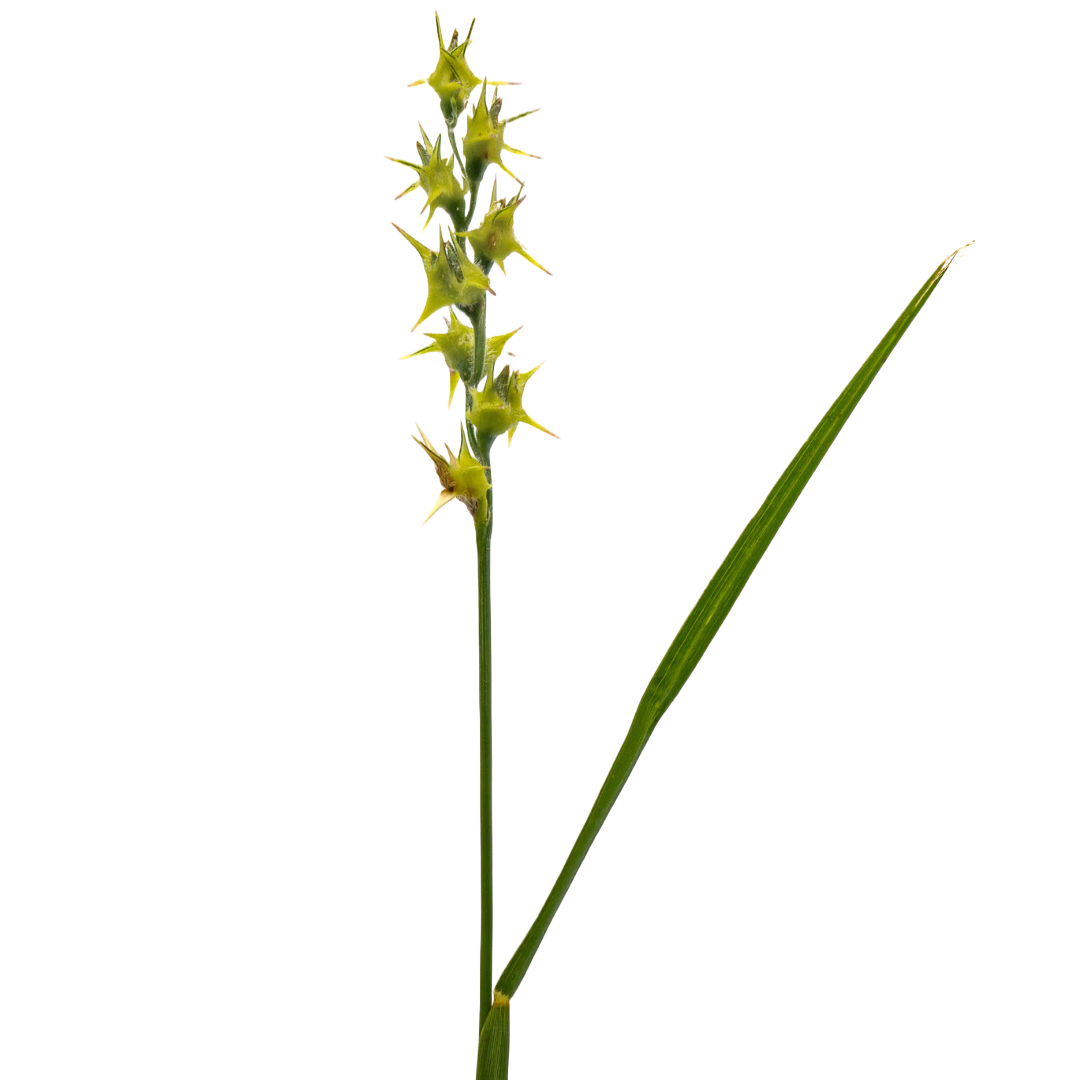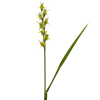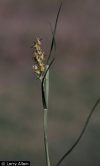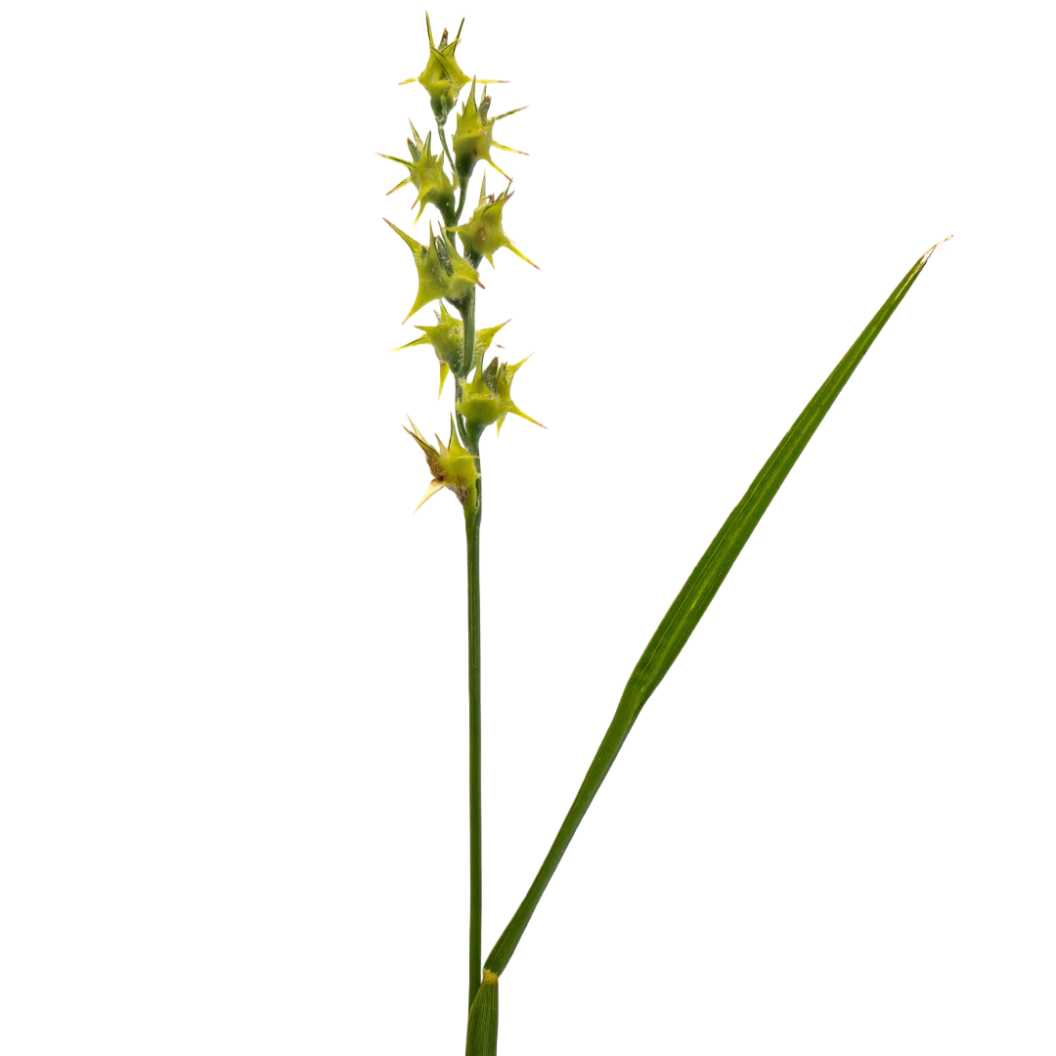




Sandbur
DESCRIPTION: Sandbur is a type of grass that is commonly found in warm regions of the world. It has long, narrow leaves and can grow up to a few feet tall. Some variations of the species have sharp seed heads that can stick to clothing or animal fur, hence the many common names. The plant is sometimes used in agriculture and landscaping as forage or erosion control.
SCIENTIFIC NAME: Cenchrus
OTHER NAMES: Buffelgrass, Stick-Tight, Bur Grass, Sandspurs, Field Sandbur
LEAF TYPE: Grassy
FLOWERS: Sandburs have small, spiky flowers that can range in color from green to brown to purple. The spiky flowers are surrounded by small, prickly burs that can stick to clothing or animal fur. Sandbur flowers are adapted to survive in harsh, dry conditions and can often be found in fields or along roadsides. While they may be considered a nuisance by some, they are an important source of food for wildlife and can also help prevent soil erosion.
LEAVES: The leaves of sandbur are long and narrow, with pointed tips and a slightly rough texture. They are typically a greenish-gray color and can grow up to a few inches in length. The leaves grow in clumps along the stem of the plant and may have a slightly curved or wavy appearance.
LIFE CYCLE: Annual & Perennial
HOW TO IDENTIFY: Sandbur is a type of grass weed that can be identified by its spiky flowers and prickly burs. It has long, narrow leaves that grow in clumps along the stem and a slightly rough texture. The spiky flowers are surrounded by small, prickly burs that can stick to clothing or animal fur. The plant can grow up to a few feet tall and is typically a greenish-gray color. Sandbur is commonly found in dry, sandy areas like fields, roadsides, and along beaches. If you're not sure if a plant is sandbur, you can look for the spiky flowers and burs as well as the narrow leaves to help you identify it.
MECHANICAL CONTROL RECOMMENDATIONS:
1. Mowing or Cutting - More Info
2. Grazing - More Info
3. Tilling - More Info
4. Plowing - More Info
5. Herbicide Application - More Info
6. Manual Removal - More Info
7. Mechanical Brush Clearing - More Info
CHEMISTRY RECOMMENDATIONS:
"Pre-emergent herbicides:
Oryzalin: Oryzalin is a pre-emergent herbicide that targets grassy and broadleaf weeds. It is commonly used to control annual grasses and some perennial grasses.
Pendimethalin: Pendimethalin is another pre-emergent herbicide effective against a wide range of grasses and broadleaf weeds. It can be used to prevent the growth of Cenchrus spinifex and other grassy invaders.
Trifluralin: Trifluralin is used to control annual grasses and certain broadleaf weeds. It forms a barrier in the soil that prevents weed seedlings from emerging.
Prodiamine: Prodiamine is often used to control crabgrass and other annual grasses. It can also help in preventing the germination of Cenchrus spinifex seeds.
Dithiopyr: Dithiopyr is effective against both grassy and broadleaf weeds. It provides pre-emergent and early post-emergent control.
Isoxaben: While more commonly used for broadleaf weeds, isoxaben can also provide some pre-emergent control for certain grassy weeds.
Dimethenamid-P: This herbicide is known for controlling annual grasses and certain broadleaf weeds. It is commonly used in turfgrass management.
Benefin: Benefin is used to control annual grasses and some broadleaf weeds. It can be applied as a pre-emergent treatment.
Post-emergent herbicides:
Fluazifop-P-butyl: This herbicide targets grassy weeds and is commonly used to control annual and perennial grasses. It may provide some control over Cenchrus spinifex, but efficacy can vary.
Clethodim: Clethodim is another herbicide that targets grassy weeds and is effective against a variety of annual and perennial grass species.
Sethoxydim: Sethoxydim is used for post-emergent control of annual and perennial grasses. It can be effective against certain grassy weeds.
Fenoxaprop-p-ethyl: This herbicide targets grassy weeds and is used to control a range of annual and perennial grass species.
Glyphosate: While glyphosate is primarily a broad-spectrum herbicide used for non-selective control, it can also affect grassy weeds. However, resistance issues have been reported in some grass species, so its effectiveness can be limited.
Selective Herbicides: Some selective herbicides designed for broadleaf weed control in specific crops or turfgrasses can also have an impact on grassy weeds. These might be considered for Cenchrus spinifex control if the grass is growing in a context where other grasses or plants need to be preserved.
Selective herbicides:
Fluazifop-P-butyl: This herbicide is designed to target and control grassy weeds while leaving most broadleaf plants unharmed. It's often used in lawns, turf, and other managed landscapes.
Clethodim: Clethodim is effective against a wide range of annual and perennial grasses. It can be used in various settings, including agricultural crops and non-crop areas.
Sethoxydim: Sethoxydim is another selective herbicide that targets grassy weeds. It's commonly used in lawns, turf, and other areas where grass control is needed.
Fenoxaprop-p-ethyl: Fenoxaprop-p-ethyl is used to control annual and perennial grasses in crops, lawns, and turfgrass.
Fluazifop-P: Similar to fluazifop-P-butyl, this herbicide targets grasses and is often used in lawns and turf management.
Quinclorac: Quinclorac is primarily used to control broadleaf weeds in lawns, but it can also have some effectiveness against certain grassy weeds.
MSMA (Monosodium Methanearsonate): MSMA is used to control grassy and broadleaf weeds in turfgrass. However, its use might be restricted due to environmental concerns related to arsenic content.
Diclofop: Diclofop is used to control grassy weeds in certain crops and turfgrasses.
Non-Selective herbicides:
Glyphosate: Glyphosate is one of the most widely used non-selective herbicides. It's effective at killing most plants by inhibiting an enzyme necessary for plant growth. There have been reports of glyphosate-resistant Cenchrus spinifex populations in some areas, so its efficacy might vary.
Glufosinate: Glufosinate is another non-selective herbicide that affects a similar enzyme as glyphosate. It can provide control over a variety of plants, including grasses and broadleaf weeds.
Diquat: Diquat is a contact herbicide that causes rapid desiccation of plant tissues upon contact. It's often used for quick, burndown control of vegetation.
Paraquat: Like diquat, paraquat is a contact herbicide that causes rapid damage to plant tissues. It's often used for spot treatments and is known for its fast action.
Pelargonic Acid: This is a fatty acid-based herbicide that acts by disrupting plant cell membranes. It's used for quick desiccation of vegetation.
Imazapyr: Imazapyr is a herbicide that provides both pre-emergent and post-emergent control of a wide range of plants. It can be effective for controlling established Cenchrus spinifex.
Carfentrazone: While it's often used for broadleaf weed control, carfentrazone can also provide some control over grassy weeds.
Sodium Chlorate: Sodium chlorate is a contact herbicide that can be used for non-selective weed control. However, its use is restricted in many areas due to its potential environmental impact.
Recommended Prevention
Recommended Control

